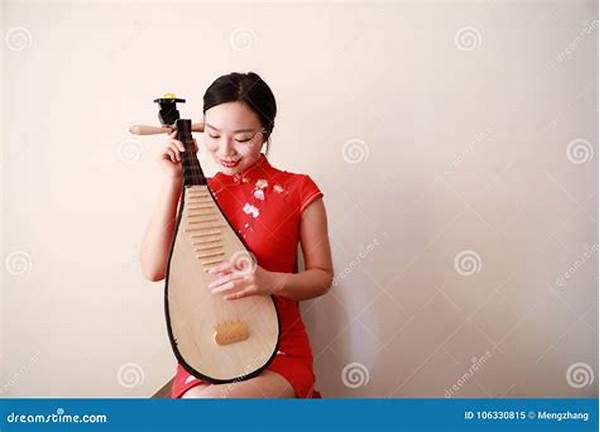- Chinese Traditional Music Instrument Pipa Delivering Dramatic Tones
Chinese Traditional Music Instrument Pipa Delivering Dramatic Tones
The Magnetic Allure of the Chinese Pipa: A Cultural Masterpiece
Meet the pipa, the enchanting Chinese traditional music instrument known for delivering dramatic tones that resonate with anyone who listens. Originating from the depths of ancient China, the pipa has traveled through time, preserving a rich heritage while continuing to captivate audiences with its emotive power and distinctive sound. It’s not just about the strings on the wooden body; it’s about how those strings have woven themselves into the tapestry of Chinese culture. With every strum and pluck, the pipa tells stories, evokes emotions, and takes listeners on a melodious journey through ancient landscapes.
Read More : List Of Experimental String Instruments Created By Indie Musicians
Sound intriguing? That’s just the harmonic beginning. Imagine a solitary musician on a dimly lit stage, painting vivid mental pictures through musical notes alone. This powerful experience is something the pipa delivers effortlessly. Often compared to a painting in motion, the pipa’s dramatic tones create an intimate dialogue between the artist and their audience, building a connection that transcends language. This timeless instrument serves not just as a bearer of music, but as an ambassador of cultural stories and collective memories, making it a must-explore gem for music enthusiasts, cultural anthropologists, and everyone in between.
Understanding the Charm of the Chinese Pipa
The pipa is unlike any other instrument you’ll encounter. Its unique selling point lies not just in its musical capabilities but also in its rich history that dates back to the Qin and Han Dynasties. A lute-like instrument, the pipa has a pear-shaped body and usually comes with four strings. The performer uses fingerpicks attached to each hand to pluck the strings, creating music that is as expressive as a dramatic theatrical performance. The dramatic tones of the pipa encompass a versatile range, from gentle, whispering melodies to fierce, stormy crescendos, making it an instrument that keeps its audience on the edge of their seats.
The Expressive Power of Pipa’s Dramatic Tones
One of the fascinating characteristics of the pipa is its ability to express varying atmospheres and emotions, translating complex human feelings into audible art. Whether you’re feeling somber or joyous, the pipa can echo your innermost emotions, becoming your personal soundtrack for the moment. Its historical compositions cover narratives of ancient battles, pastoral scenes, and legendary romances. It’s a music blog in itself, showcasing an ancient form of storytelling that is both educational and deeply moving.
Modern Uses and Performances
Today, the pipa is not confined to the traditional Chinese music scene. Contemporary musicians have adopted it into various genres, merging old-world charm with new-age innovation. Pop, rock, and even electronic music have begun to embrace the pipa’s unique sound. Its adaptability and dramatic tonal range make it a favored choice for musicians looking to add an exotic flair to their work. The fusion of the pipa in different musical styles exemplifies cross-cultural exchanges, promoting a global appreciation of its dramatic tones.
Details and Examples of Pipa’s Dramatic Tones
To delve deeper into the magic of the pipa:
Read More : Brass Instruments Commonly Used In Orchestras
The Pipa’s Role in Modern Marketing and Education
The pipa is also garnering interest as a unique marketing tool, used by businesses looking to engage audiences with distinctive sonic branding. Moreover, educational platforms have recognized its importance, including it in world music curricula to offer students a more comprehensive understanding of global cultures.
Closing Instances of Authentic Storytelling
Let’s take the tale of Mei Ling, a modern-day pipa maestro. Her journey from a curious eight-year-old to a celebrated musician showcases the transformative power of learning such an evocative instrument. Through diligent practice, Mei Ling has become a cultural ambassador, using her mastery of the pipa to bridge cultural divides and inspire a new generation of artists.
Conclusion: Embracing the Soul of the Pipa
In conclusion, the Chinese traditional music instrument pipa delivering dramatic tones is much more than a musical entity; it’s a storytelling vessel, an emotional guide, and a cultural bridge. Its dramatic tones continue to captivate audiences worldwide, offering a blend of historical richness and modern versatility. Whether you are an aspiring musician, a cultural enthusiast, or simply someone looking for a deeper connection through art, the pipa is ready to enchant you with its timeless allure. Dive into the pipa’s world and let its dramatic tones narrate the stories you’ve yet to discover.
